Top 10 List Name Of Rice Fields In Vietnam
Top 10 List Name Of Rice Fields In Vietnam
What are the meanings and symbols of the fields in Vietnam?
First, please to Vietnam Trust Car Rental shows you what it means to be big fields in Vietnam
You’ve all seen the pictures – shelf-like terraces of bright green fields, undulating up, around and below steep mountain faces. If you didn’t already know, they’re Vietnam’s rice fields, and loads of tourists visit various parts of Vietnam every year just to look at them.
But before you plan on visiting Vietnam’s rice fields, you need some important info – you’ll only find these types of rice terraces in certain parts of Vietnam, and they only look good at certain times of year.
During some periods of the year, they don’t look like the pictures – they just look like mucky brown swamps.
It’s also important to know that the rice fields in different parts of Vietnam look different to one another. Some clamber up mountains, some are in low-lying marshland, some are flat green fields, and some are just a short hop from populated cities. Vietnam’s rice fields aren’t all the same, so in this list, we’ve brought you a variety-packed combo of them all.
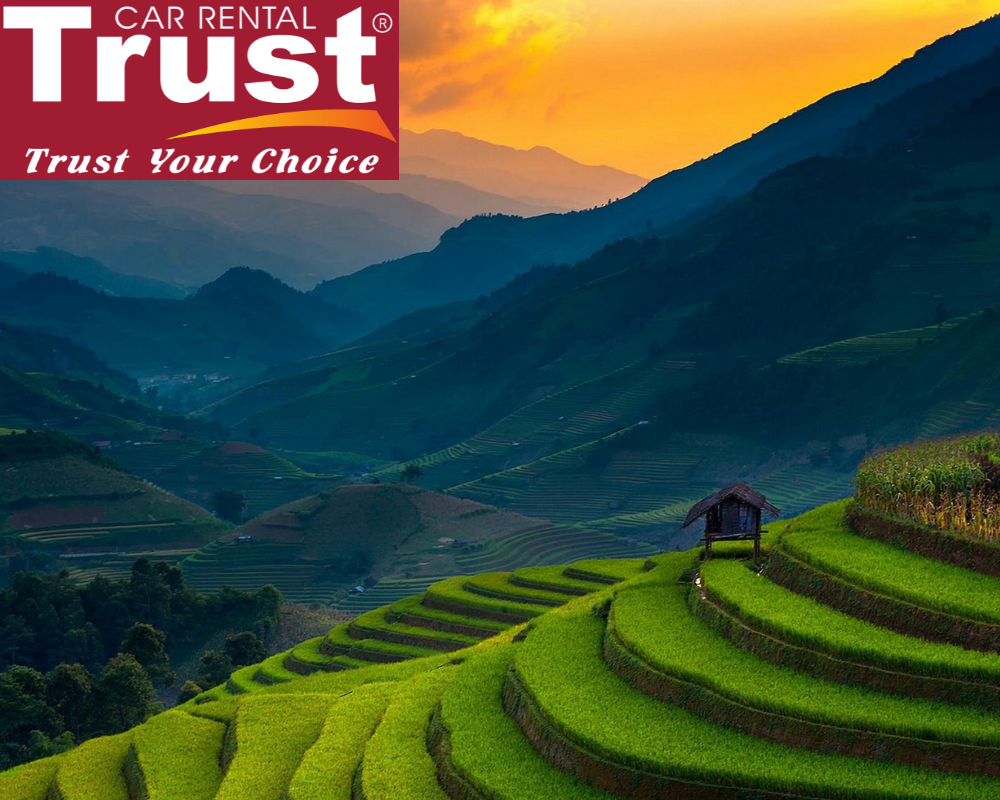
If you’ve seen pictures of Vietnamese rice fields online or in brochures or on a documentary or whatever, that was probably Sapa.The most famous rice-growing region in Vietnam, it’s a massive tourist hub, packed with hikers, day-trippers, view-seekers and everyone in between.
Sapa is so ridiculously popular because it ties together lots of Vietnam’s most famous and alluring attractions into one tidy little package – you get staggering stacks of the nation’s iconic rice fields along with hikes (both long and short), a fascinating culture, spectacular scenery, rich history and colorfully-garbed local tribes.
Sapa’s population is mainly made up of Hmong people and Red Dao people, two of the oldest and most famous tribes in the nation.
The best rice fields in Sapa, Vietnam
The town of Sapa is surprisingly large, and it’s a small distance away from the villages and tribal settlements that are nestled right in the heart of the mountains and rice terraces. So don’t stay in the center of Sapa.
Instead, find a local family guesthouse or homestay in the mountains, and organize a trekking tour with that homestay. Arrange a 2-day or 3-day hike, which will take you through some of the most remote, rural, rice-packed areas in the region.
On a short tour from Sapa town, you’ll just see endless herds of other tourists, instead of the rural farmland, rice terraces and towering mountains which make the nation so special. Because Sapa is such a massive tourist attraction, you have to put some effort in to really enjoy it – and to see the region’s best rice fields.
- Location: Sapa is in north west Vietnam, close to the Chinese border, but the small tribal villages which dot the mountains are a short distance from Sapa center.
- Distance from the closest big city: Around 320km from Hanoi to central Sapa.
- How to get there: It’s easy to get a bus from Hanoi to Sapa. You’ll usually find local villagers in Sapa’s main bus station, who will invite you to stay in their rural guesthouses. That’s the easiest way to get an authentic experience, and to see the best of the region’s rice fields.
- When to visit: September and October. It’s a short window, but it’s an incredible window. Don’t be tempted to go any other time of year.
Ha Giang - The largest terraced field
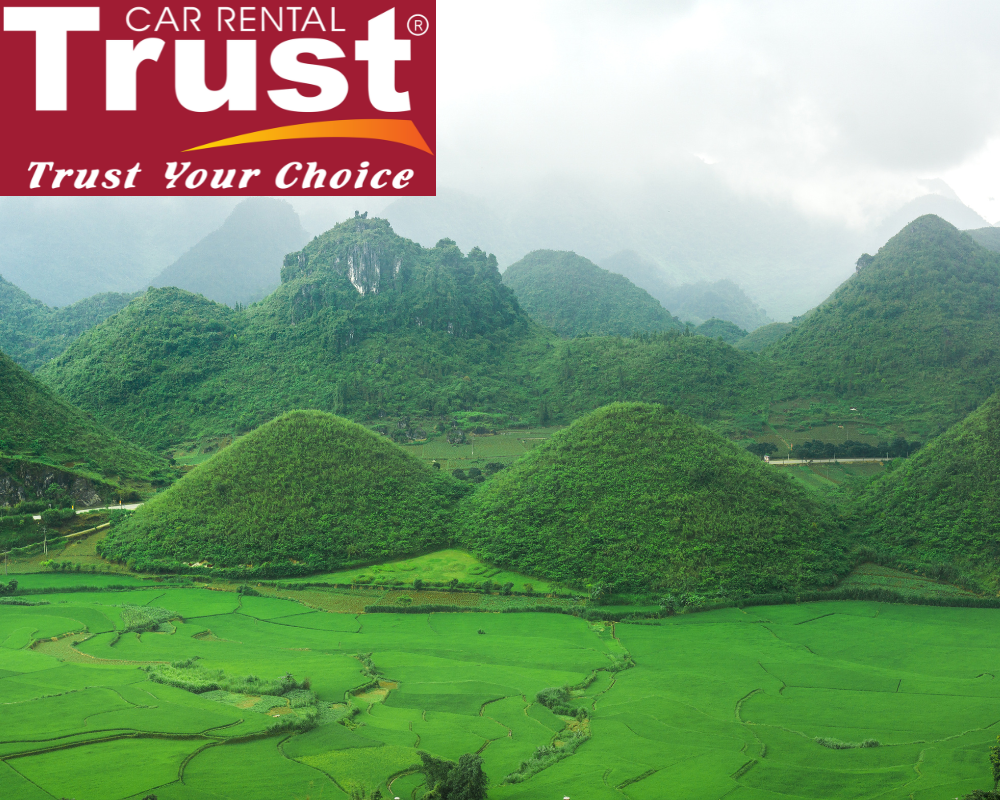
They say Ha Giang is the new Sapa, as the landscape is similar, the culture is similar, but the crowds are smaller. And that’s sort of true, but in reality, there are lots of crowds here too. (If you’re looking for the most untouched areas you can find, we’ve included some later in this article)
Ha Giang isn’t most famous for its rice terraces, but there are loads of them in the region, and if you’re here to tackle the Ha Giang Loop (why else would you be?), you’ll see plenty of them as you zip and zoom through the region’s karst, mountains and towering peaks.
The best rice fields in Ha Giang, Vietnam
The real appeal in this region is the Ha Giang Loop. If you journey along the entire circumference of the Ha Giang Loop, you’ll travel 350km through the region, taking in various views of farms, mountains, tribal villages, rice terraces, rivers, waterfalls and more. So in Ha Giang, you don’t even need to seek out the best rice terraces – you’ll just see them as you ride along.
If you’re on a tight turnaround, Hi Giang offers a convenient way to see Vietnamese rice fields without having to put in any extra effort.
- Location: Northern Vietnam, close to the Chinese border.
- Distance from the closest big city: Ha Giang center is around 300km from Hanoi, and around 230km from Sapa. You’ll find rice fields dotted around the entirety of the Ha Giang region.
- How to get there: There are very regular buses from Hano to Ha Giangi, and relatively regular buses from Sapa to Ha Giang. Once you’re in central Ha Giang, it’s very easy to explore the Ha Giang Loop.
- When to visit: Again, your best window here is September and October.
Hoang Su Phi - Vast and rich plateau fields
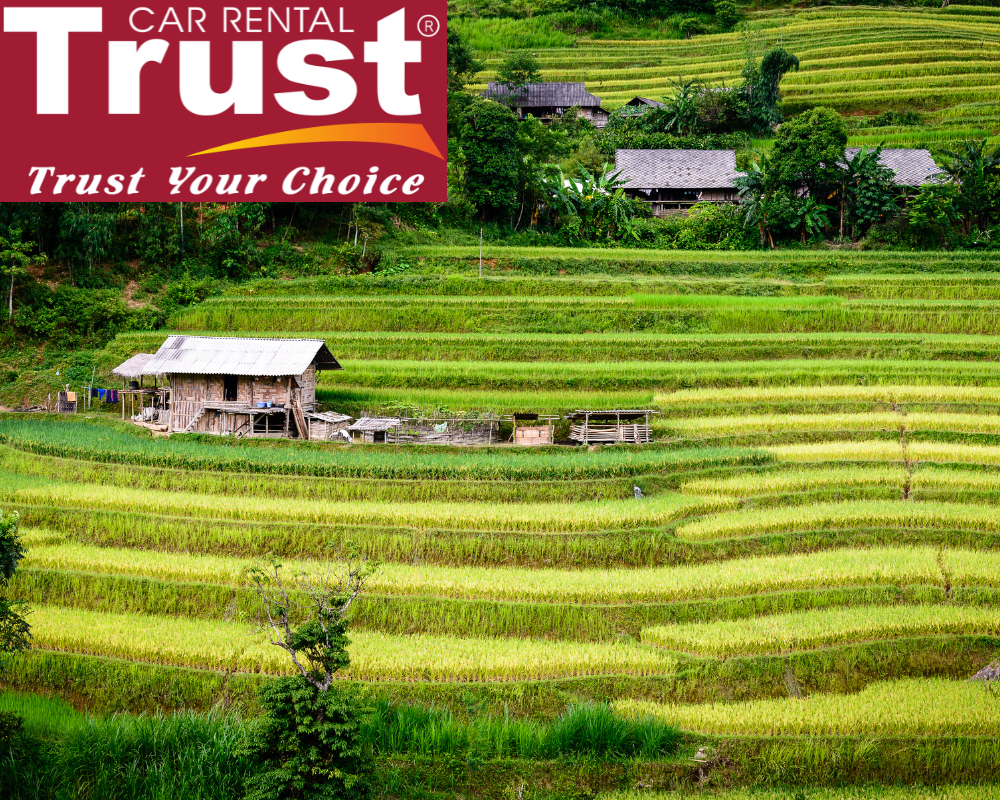
They say Ha Giang is the new Sapa, but I say that Hoang Su Phi is the new Ha Giang. If you want a similar experience to Ha Giang, but with more authenticity and less tourists, go to Hoang Su Phi.
Here, you get similar views, similar tribes and similar landscapes, but with way fewer tourists. People are always talking about trying to find the most remote parts of Vietnam, pretending that Sapa, Ha Giang and Ninh Binh are really secluded and untouched.
Those places aren’t – but Hoang Su Phi genuinely is.
In Hoang Su Phi, you can take road trips through the mountains, which take in peaks, mountains, valleys, and the rice fields you’re so keen to see. For travelers seeking Vietnamese rice terraces, Hoang Su Phi is ridiculously underrated.
The best rice fields in Hoang Su Phi, Vietnam
Again, if you ride or motorbike (or take a motorbike tour) through the area, you’ll see lots of rice fields just by traveling around. But the best are found in the areas in and around the outskirts of Hoang Su Phi. If you want to seek out the best rice terraces you can, consider these places:
- Bang Phung – around 35km from central Hoang Su Phi, this village has some of the highest, steepest rice fields in the whole of Vietnam.
- Ban Luoc – only 15km from Hoang Su Phi, Ban Luoc is popular with hikers. It’s probably the best hidden hiking spot in all of Vietnam.
- Nam Ty – around 25km south of Hoang Su Phi, these terraces are some of the most accessible in the area, but they’re still incredible.
- Ho Thau – close to Ban Luoc, you’ll find lots of Red Dao tribespeople here (and some excellent rice terraces, obviously).
- Location: Northern Vietnam, along the Chinese border and just to the west of Ha Giang.
- Distance from the closest big city: Hoang Su Phi is around 280km from Hanoi, and around 80km west of Ha Giang.
- How to get there: There’s no direct bus from Hanoi, though you may be able to arrange a private transfer from Hanoi. Most travelers get a bus from Hanoi to Ha Giang before then arranging a private transfer (or riding a motorbike) from Ha Giang to Hoang Su Phi.
- When to visit: Again, the best time is September and October.
Mu Cang Chai - Large and long-standing rice fields of Vietnam
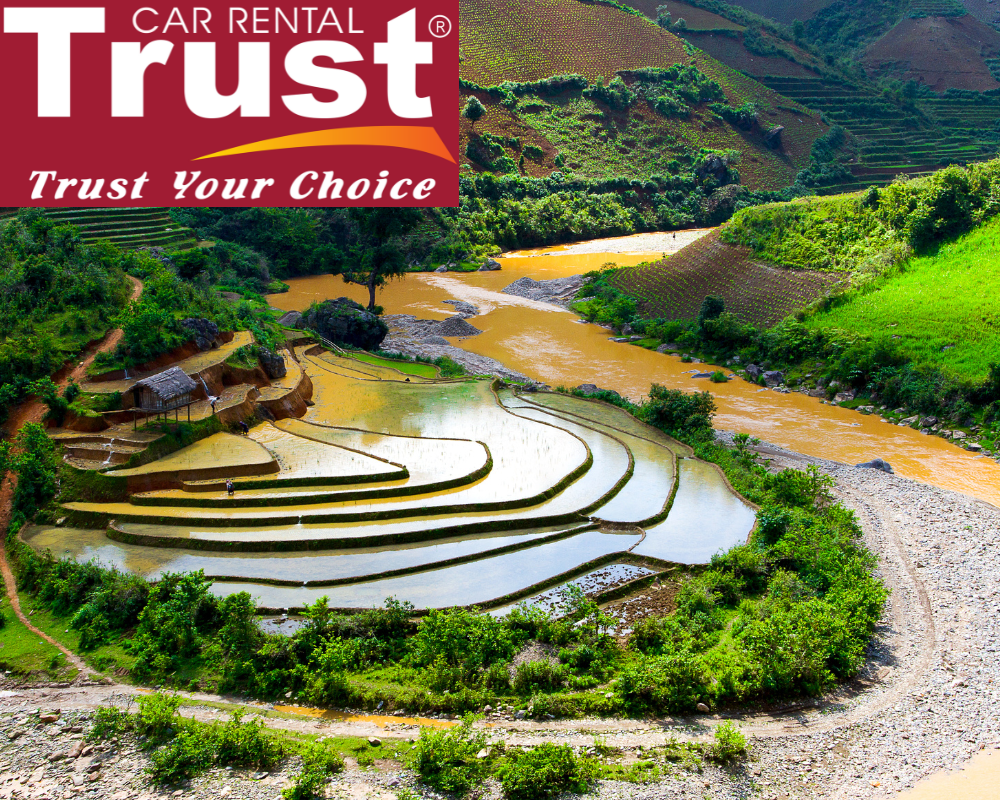
In terms of landscape, Mu Cang Chai is pretty similar to the three entries we’ve already listed. In terms of atmosphere, it’s similar to Hoang Su Phi, but it’s even more remote and untouched.
That’s largely because getting here is a pretty hefty challenge – if you’re approaching from the south, you’ll need to tackle the lofty heights of Khau Pha Pass, one of the highest and most dangerous roads in the whole of Vietnam.
But on a good day (when the skies are clear), it’s absolutely worth the trip – the views of the region’s rice fields from the top of Khau Pha Pass are some of the nation’s best, while the views from Mu Cang Chai are almost as good. A ridiculously mountainous region, the rice fields here are vast, and sit on both rolling hills and dizzying drops.
For a combination of mountains, local tribes, endless rice terraces, great drives, good hikes and untouched regions of Vietnam, Mu Cang Chai is excellent.
The best rice fields in Mu Cang Chai, Vietnam
Again, you should book a trek from your guesthouse. Local people know this area better than anyone, and there are no official walking trails or waymarkings, so traveling with a local is the only way to guarantee that you’re definitely seeing the best (and most varied) views of rice fields. Any guesthouse will be able to arrange an incredible trek.
If you want the best views of the rice terraces on the drive in to Mu Cang Chai, you should tackle the trip with a private driver, allowing you to stop whenever and wherever you want. For rice terrace views, it’s one of the best experiences that Vietnam has to offer.
- Location: In the northwest of the nation, but not as far north as Sapa, Ha Giang or Hoang Su Phi.
- Distance from the closest big city: Around 300km from Hanoi and 150km from Sapa.
- How to get there: It’s possible to get buses from both Sapa and Hanoi, but some tourists also rent private drivers from other small places, or rent motorbikes to make their own way to Mu Cang Chai.
- When to visit: Mid September to mid October, leaving you with a pretty tiny window
Mai Chau - Old and little known rice fields
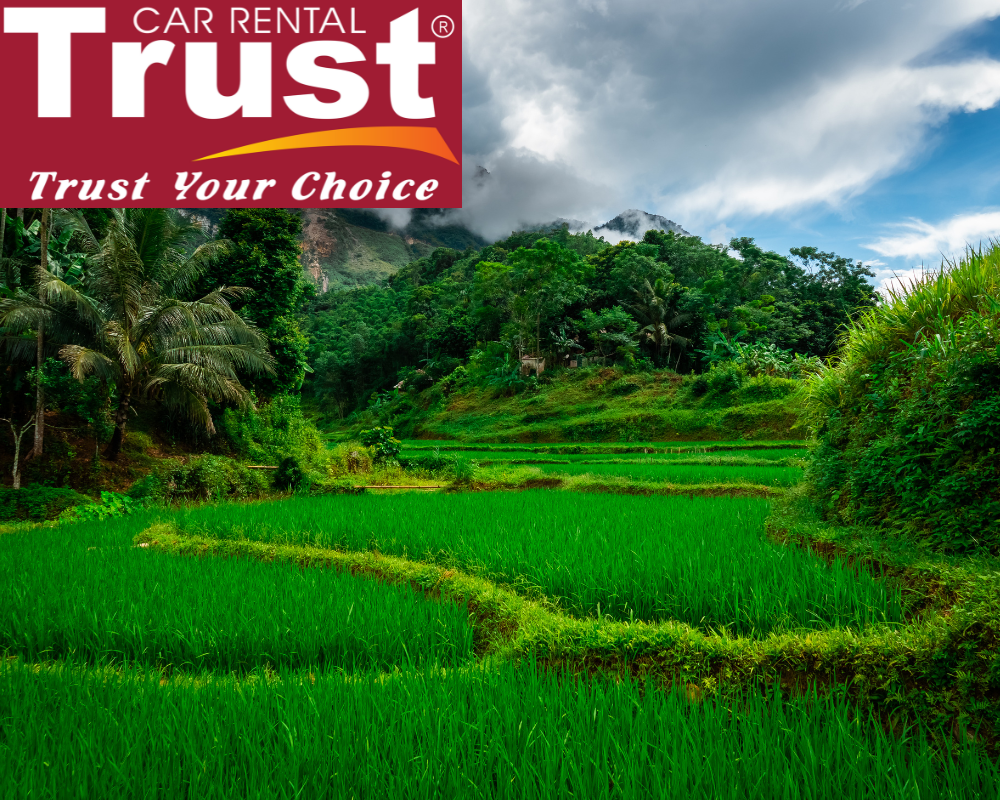
Continuing along our northern rice field theme, we now move a little closer to Hanoi in the form of Mai Chau.
While Vietnam’s most northern rice terraces are lofty shelves of mountainside layers, the terraces you see further south are usually much flatter, dominating seemingly-endless stretches of horizontal farmland. In this region of Vietnam, rice fields sit in the space beneath the mountains rather than on the side of them.
In Mai Chau, life is lived by what the land provides. Most people work in agriculture, most homes are situated near rice fields, and most meals include rice. Mai Chau is a popular getaway for Hanoi’s residents, who like to escape the busy bustle of the capital in pursuit of Mai Chau’s relaxing atmosphere.
The best rice fields in Mai Chau, Vietnam
Rent a bicycle, go on a hike or arrange a tour. In Mai Chau, you really don’t need to make any huge effort to see the best rice fields, as you’ll see them everywhere.
If you ride a bicycle into the rural outskirts of Mai Chau, you’ll be riding through rice fields. If you go on a walk, you’ll see rice fields. If you hike up a mountain, you’ll be looking down on views of rice fields. Wherever you go in Mai Chau, you’ll see rice fields.
- Location: Mai Chau is in the northern part of Vietnam, just west of Hanoi.
- Distance from the closest big city: Around 135km from Hanoi.
- How to get there: There are frequent buses from Hanoi, but you can easily and affordably get a private transfer (from many places) if you prefer.
- When to visit: If you want to see the rice fields at their greenest, it’s best to visit in May or June, but August, September and October are pretty good too.
Pu Luong - Abundant fields with seasonally stable lushness
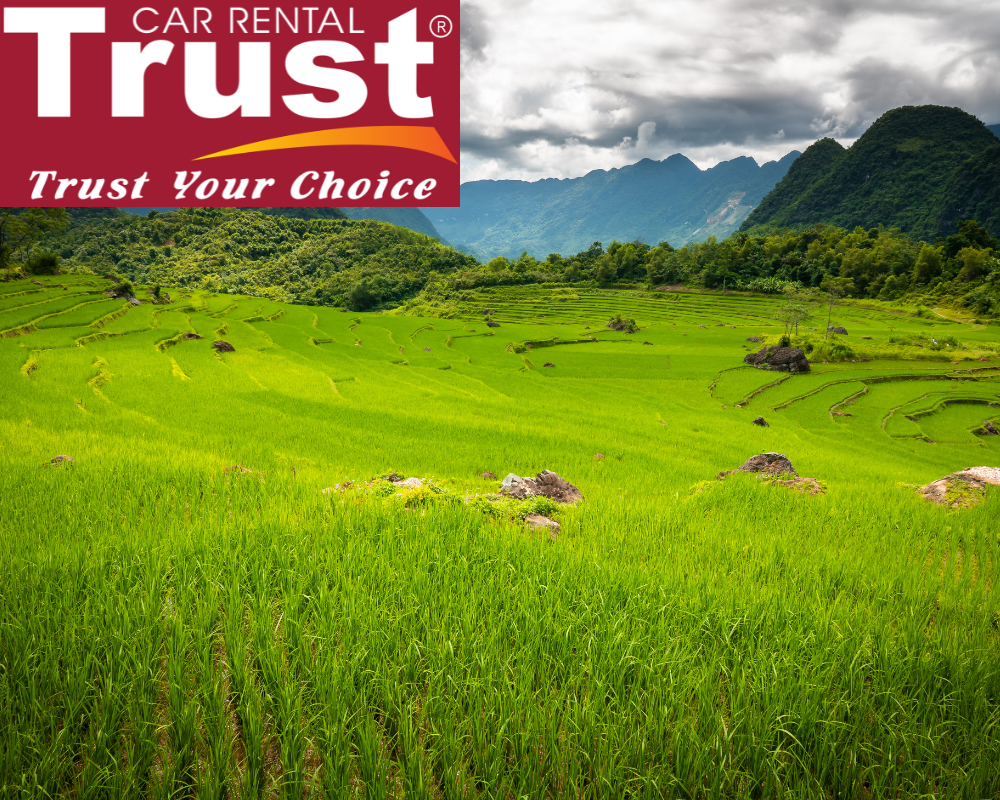
Close to Mai Chau is Pu Luong, which offers a similar landscape but an even more remote and rural location. It’s a rugged and rudimentary place (even more so than some of the other destinations we’ve featured).
Here, bamboo water wheels work alongside water buffalo and local farmers to plant, harvest and nurture the rice-packed farmland. The landscape here is halfway between what you’ll see in Mai Chau and what you’ll see in places like Sapa.
While Mai Chau’s rice fields stretch out into the horizon, and Sapa’s are stacked onto the side of vertiginous mountains, Pu Luong’s landscape is mainly made up of rolling hills, lowy-lying streams and forested backdrops. It’s an undulating landscape, and the rice sits on and across much of it.
The best rice fields in Pu Luong, Vietnam
Without doubt, you should book an organized trek.
Pu Luong is largely unexplored, and hiking isn’t really a hobby in Vietnam (apart from for the few tourists who come here), so there’s no network of hiking routes or waymarked trails. The only way to see the best of the area is to therefore book an organized hike.
If you’re content with seeing any old rice fields, you’ll see them when wandering, biking and driving through the area, but an organized trek is definitely best.
- Location: Pu Luong Nature Reserve itself is in the north of the country, to the southwest of Hanoi. There are lots of small tribal villages and settlements dotted around the reserve, all of which make for a great base.
- Distance from the closest big city: Around 140km from Hanoi, and around 60km from Mai Chau.
- How to get there: There is no public bus to Pu Luong, from anywhere. If you’re in Hanoi, you can get a bus to Mai Chau or Canh Nang before hitchhiking, riding a motorbike or organizing a private ride from those places to Pu Luong or one of the nearby villages. For reaching the rice fields themselves, any guesthouse around the Pu Luong area will be able to arrange a Pu Luong trek for you, which will include transport if necessary.
- When to visit: May and June are best, but September and October are excellent too.
Ninh Binh - The most carefully planted fields
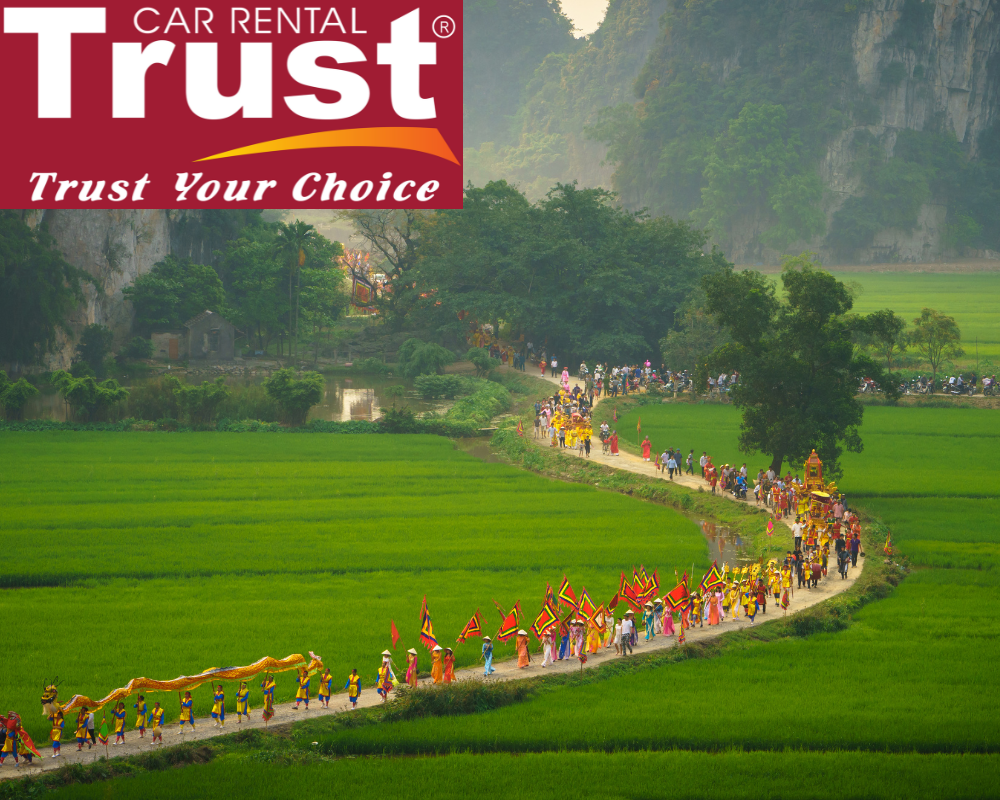
Ninh Binh is hugely underrated. It’s popular, it’s well known, and lots of tourists visit, but it still doesn’t get the credit and attention it deserves. The town itself is small and charming, but it’s outskirts are the real attraction.
Known as ‘Halong Bay on land,’ you get jagged karsts, lofty peaks, UNESCO-listed caves, excellent hikes, great bike rides and some of Vietnam’s best rice fields.
All of the outdoor action is in Tam Coc, only around 10km from the center of Ninh Binh’s diminutive dimensions. Here, you can see the rice terraces in a myriad of ways, by hiking, walking, cycling or even taking a boat trip.
The best rice fields in Ninh Binh, Vietnam
Hiking, cycling and walking are all good ways to see various parts of Tam Coc’s vast beauty, and there are endless peaks, trails and paths to explore, all of which offer excellent views of the region’s rice fields.
But the best rice-based experience that Ninh Binh has to offer is on the back of a boat. These basic but beautiful boat trips are, for me, one of the most exciting and alluring attractions in northern Vietnam.
On these boat trips, you’ll jump into a rustic and rudimentary wooden boat, and a local person will use their feet (seriously) to paddle you along. You’ll enter caves, glide by rice fields, float along the river, and see pigs, water buffalo and local kids. It’s unique, unusual and beautiful, and it’s one of Vietnam’s best experiences.
- Location: In the north, close to Hanoi.
- Distance from the closest big city: Around 100km south of Hanoi.
- How to get there: It’s easy to get a bus or train from Hanoi to Ninh Binh, but lots of people instead decide to tackle that same journey on a motorbike. It’s best to spend a couple of days in Ninh Binh to give it the attention it deserves, but it’s possible to visit on a day trip from Hanoi if you’re short on time. From Ninh Binh, it’s easy to ride a motorbike or book a private driver to Tam Coc.
- When to visit: May and June.
The Mekong Delta - The most fertile alluvial rice fields in Vietnam
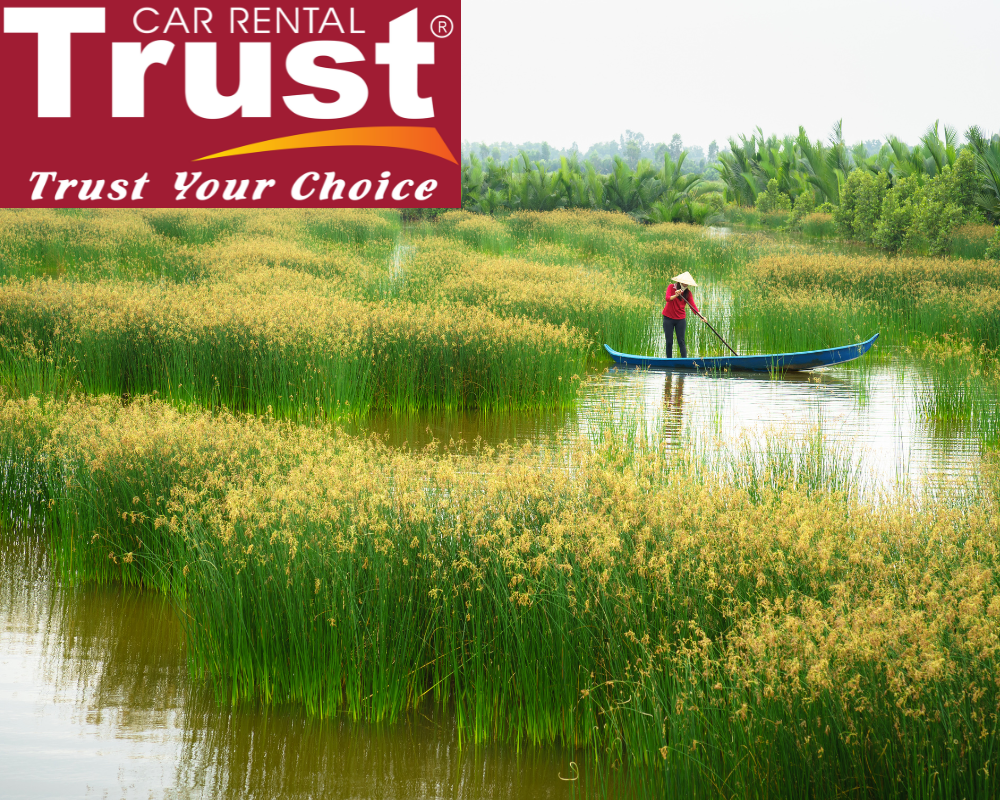
Every other entry on this list is in (or near) Vietnam’s north, but the Mekong Delta is planted firmly in the south. A sprawling network of rivers, rivulets and various other waterways, The Mekong Delta is actually the biggest rice-producing region in the whole of Vietnam, which is pretty incredible, given how much of it is churned out in the mountainous north.
Around 70% of the nation’s rice comes from the Mekong Delta.
Exploring the rice fields in the Mekong Delta is a massively unique experience. Most of Vietnam’s rice regions are mountainous and hilly, meaning you need to hike your way towards the paddies.
But here, most journeys are tackled by boat, the landscape a bizarre but beautiful water-woven patchwork of farms, houses, villages, rice paddies and markets, their shapes and sizes dictated by the natural flow of the mighty Mekong.
The best rice fields in Mekong Delta, Vietnam
The best way is to spend a few days here, using one of the inner-delta areas as your base. Good choices include Can Tho and My Tho, but staying in An Giang province is best.
Take a boat trip, hire a bike, hire a private driver, and just explore. No matter where and how you travel, you’ll see plenty of rice fields.
Don’t visit the Mekong Delta on a whistle-stop day trip from Ho Chi Minh City (unless you’re very short on time), as you won’t see the best of the region.
- Location: In the south west, west of Ho Chi Minh City, and near (and on) the Cambodian border.
- Distance from the closest big city: An Giang province is around 200km from Ho Chi Minh City, but other areas are closer. The whole Mekong Delta region is over 40,000 square kilometers, so consider carefully which parts you want to visit.
- How to get there: Take a bus from Ho Chi Minh City to your chosen Mekong Delta destination before then booking some type of boat trip or tour (for exploring more remote parts of the region) when you arrive.
- When to visit: In June, July and August, there’s often lots of disruptive flooding, but any other time of year is great.
Hoi An - Vast fields with undeniable lushness
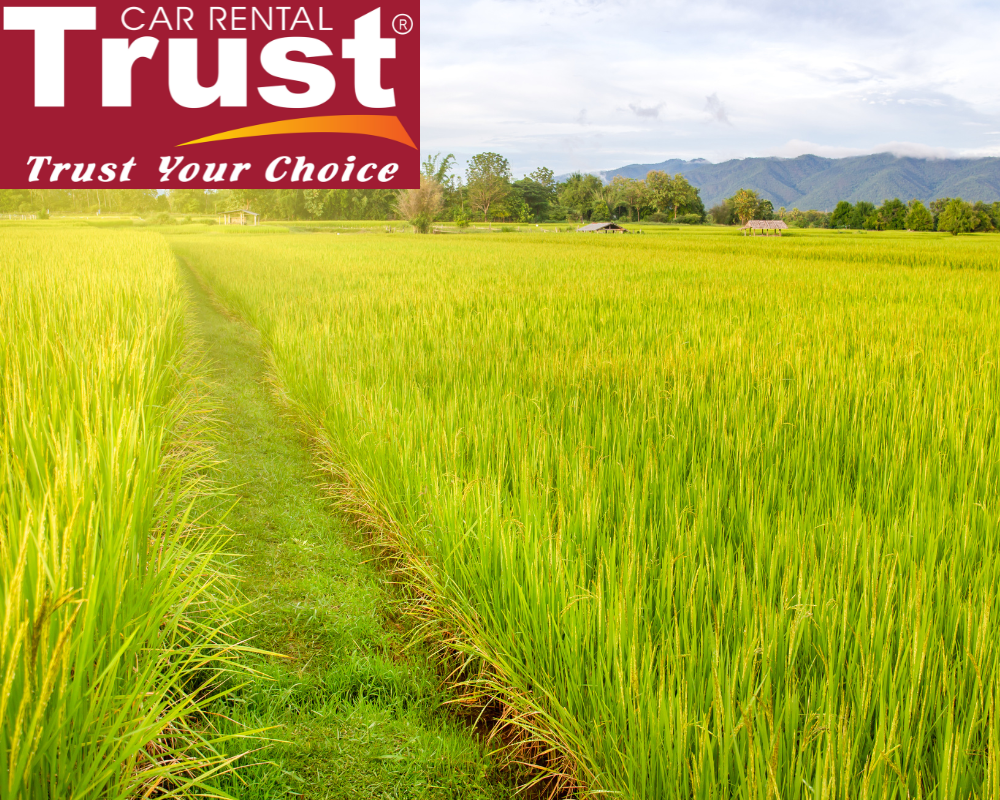
Hoi An is best known for its lanterns, lights and illuminations, with its charming old town and ancient Chinese teahouses. But just on the outskirts of the city, you’ll find lots of accessible rice fields, which are easy to explore aimlessly by foot and bicycle.
Hoi An’s rice fields definitely aren’t the most exciting ones you’ll find in Vietnam, so don’t expect to be hugely impressed, but exploring these rural backstreets by bicycle is a quaint and cute way to spend a few hours. If you’re short on time and don’t have the flexibility or freedom to visit many places in Vietnam, Hoi An’s rice fields offer an okay compromise.
The best rice fields in Hoi An, Vietnam
Get a map from your local guesthouse, ask where the rice fields are, and cycle to some of them.
Go slow, enjoy learning, and don’t get chased by a water buffalo.
All of the rice fields are north of the city centre, and they’re all easy to find – the land is flat, you can’t get lost, and you only have to journey a short few minutes.
- Location: Hoi An is in the central part of Vietnam, very close to Da Nang. The rice paddies themselves will probably only be a few minutes from your guesthouse.
- Distance from the closest big city: Hoi An is a city!
- How to get there: There are lots of bus connections to Hoi An from all over Vietnam, including Hanoi, Da Nang, Da Lat, Ho Chi Minh City, Hue, and loads more.
- When to visit: Anytime between May and September is good, but May and September are best.
Bac Son Valley (in Lang Son District) - Field with cool, lush dance climate
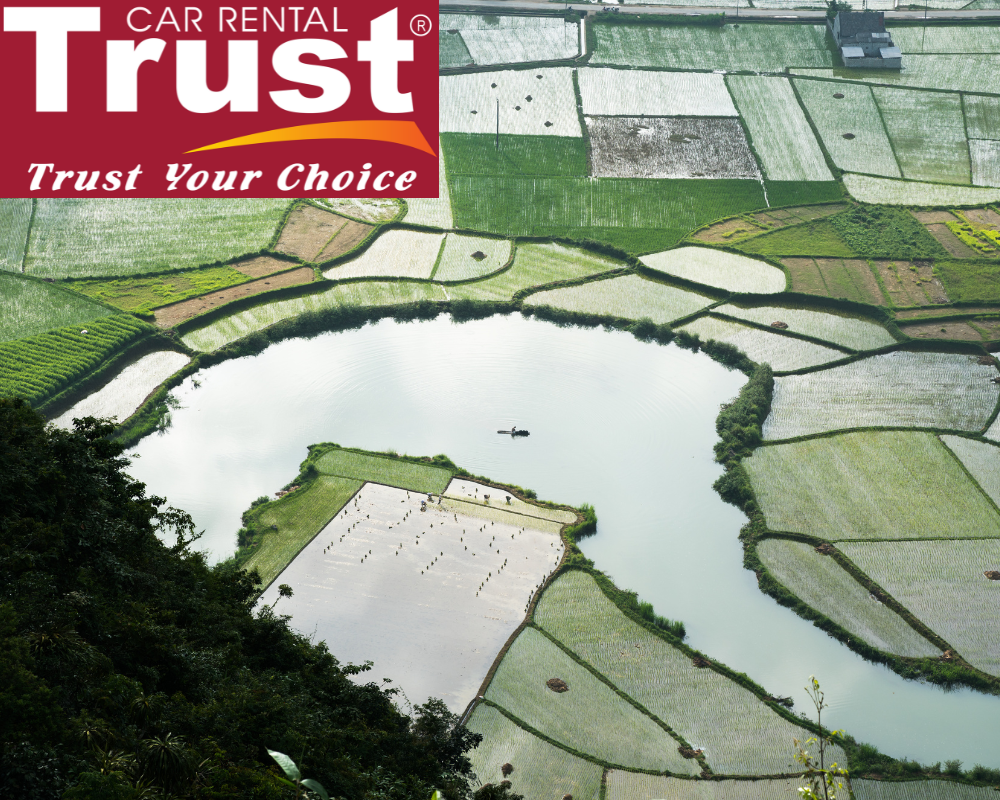
Another hidden pocket of rice fields and rugged rurality, the rice paddies here look similar to the ones you’ll find in Pu Luong and Mai Chau, but they’re further afield, they’re even less popular with tourists, and they’re in the far north east of the nation, close to the Chinese border.
Most pictures you see of Bac Son Valley all look pretty much the same – and that’s because there’s one famous stretch that offers the most scenic views. So if you’re content with grabbing one sole picture of an incredible view, this is a great place to go.
But if you want to find a rice field region with a little more nuance and diversity, it’s best to look elsewhere.
The best rice fields in Bac Son Valley, Vietnam
A hike up any of the mountains will give you an excellent view, but the most famous vista is from the accessible 45-minute climb up to the top of Na Lay Peak.
-
Location: The far north east of the nation, west of Lang Son city.
-
Distance from the closest big city: Around 160km from Hanoi, and 65km from Lang Son.
-
How to get there: Most travelers get a bus or train from Hanoi to Lang Son before then taking a private ride from Lang Son to Bac Son Valley, but it’s also possible to hire a private driver to take you directly from Hanoi to Bac Son Valley.
-
When to visit: Any time between April and November is okay, but July and November are the best months.
Is Vietnam One of the Biggest Rice-growing Nations in the World?
Yes, it is, which explains why there’s so much of it. in 2018/2019 Vietnam was the third-biggest exporter of rice sending out 6,581,000 metric tons of the stuff The nation is regularly one of the world’s biggest rice producers and exporters, so if you want to check out rice terraces, it’s one of the best countries in the world to do it.Other good nations for rice field exploration include China, Indonesia, the Philippines, India and Japan.
When is the Best Time of Day to See the Rice Terraces in Vietnam?
Sunrise. Always sunrise. Everything always looks better at sunrise, and that includes rice terraces, whether they’re flat, mountainside or somewhere in between.
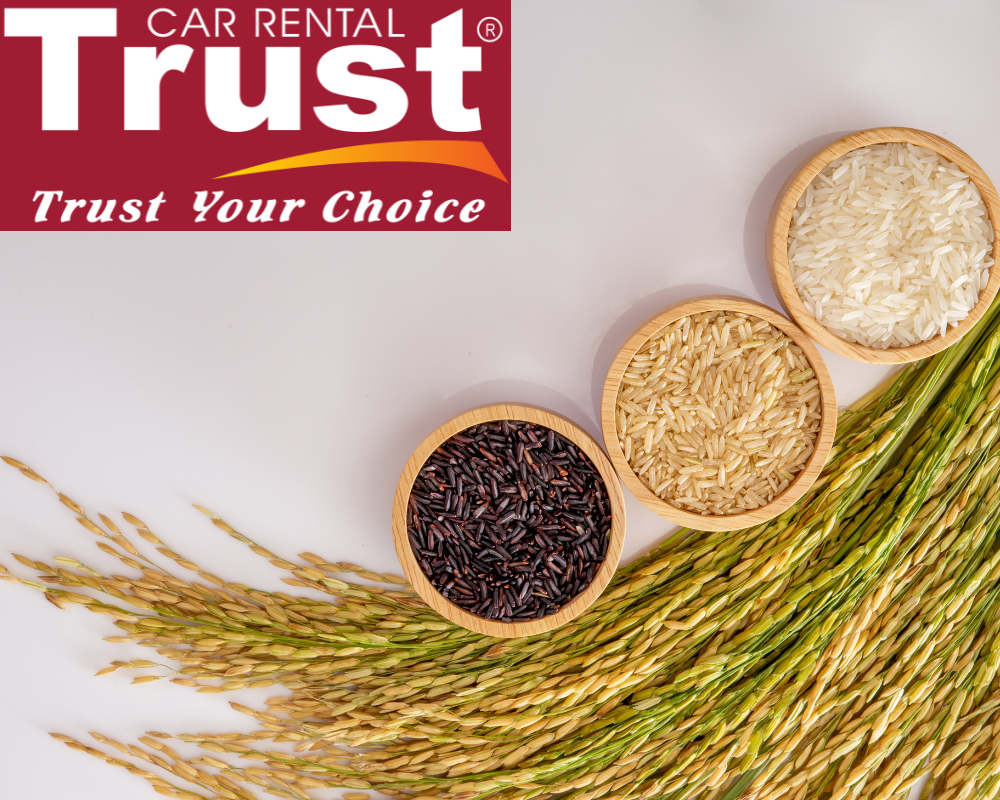
That said, always ask for local advice wherever you are. There might be a particular spot at a particular time of day that local people recommend. If they recommend something different to me, listen to them.
And if you feel that Vietnam is an ideal country for you to explore, don't forget that Viet Nam Trust Car Rental can accompany you whether it's the highlands or the plains.
Please contact us via:
1. Booking by phone: +84.934.189.301 ( Whatsapp | Viber | Imessages )
2. Booking by hotline: +84.932.72.66.44 ( Whatsapp | Viber | Imessages )
Address: 497/6A Phan Van Tri street, Go Vap district, Ho Chi Minh, Viet Nam
Website: https://www.vietnamtrustcarrental.com
Email: dos@vietnamtrustcarrental.com
Thank you so much guys & Welcome to Viet Nam Trust Car Rental !
Other news
- All Things You Need to Know About Phu Quoc (21/04/2025)
- Top 5 Best Places To Currency Exchange In Sai Gon (04/03/2025)
- Top 10 Vietnamese Street Foods You Must Try When Coming Here! (10/11/2022)
- Food To Try When Coming To Vung Tau, Vietnam (04/11/2022)
- Western Dishes When Coming To Ben Tre (04/11/2022)
- Things You Need To Know When Going To Can Gio Island, Vietnam (04/11/2022)
- Vung Tau Travel Guide & Tips (04/11/2022)
- Ca Mau Travel Guide & Tips (03/11/2022)
- Top 25 Best Things To Do In Nha Trang, Viet Nam (02/11/2022)
- Vietnam Visa Requirements All You Need To Know (02/11/2022)


